Browsing Programa de Doctorat en Enginyeria Tèxtil i Paperera by Subject "66"
Now showing items 1-15 of 15
Aplicació de tècniques electroquímiques i fotoelectroquímiques per la degradació de compostos poc biodegradables en efluents industrials tèxtils.
Sala Gastón, Mireia (Date of defense: 2012-07-19)
Industrial effluents and their further reuse have shown an increasing interest. The current PhD Thesis is based on obtaining a new system for the treatment of textile effluents. The aim of this study is to remove colour ...
Avaluació d'alternatives industrials per a l'obtenció de nous materials que valoritzen residus queratínics
Casadesús Fusté, Marta (Date of defense: 2019-11-25)
The worldwide poultry industry generates a large amount of wastes which, accordingly to the current law, are mostly discarded. These wastes include chicken feathers, keratin structures which 109.056.179 ton were generated ...
Blanqueig enzimàtic de pasta de kenaf emprant sistemes lacasa-mediador
Andreu Terrén, Glòria (Date of defense: 2013-04-15)
La present tesi s’emmarca dins d’una de les línies del Grup de Recerca Paperer i Gràfic (CIPAGRAF), del Departament d’Enginyeria Tèxtil i Paperera de l’Escola Tècnica Superior d’Enginyeries Industrial i Aeronàutica de ...
Comportamiento cinético de fibras Tencell con colorantes directos
Lis Arias, Manuel J. (Manuel José) (Date of defense: 2002-06-21)
Objetivos de la Tesis:<br/><br/>El objetivo principal de la presente Tesis, Cinética de Tintura de Tencel ,se centra en dos objetivos parciales: la sensibilidad a la temperatura y el efecto de la variación de la concentración ...
Desarrollo de microcápsulas rígidas de fragancia y de técnicas que permitan la cuantificación de la eficiencia de encapsulación
García Carmona, Carlos (Date of defense: 2019-07-12)
From a long time, finishes have been developed with fragances; despite this fact, whatever the technology used to obtain the fragrance formulation, the final effect on the odor is very low. The smell usually disappears ...
Development of new lightweight green composites reinforced with nonwoven structures of flax fibres
Ventura Casellas, Heura (Date of defense: 2017-06-19)
Composite materials offer good mechanical performance with lower weight than classical materials, what has encouraged their use in many industry applications. Moreover, the rising awareness about environmental problems has ...
Eliminación del color de las aguas residuales procedentes de la tintura con colorantes reactivos
Vilaseca i Vallvé, M. Mercè (Date of defense: 2015-05-10)
This thesis is based on the study of colour elimination of textile effluents which contain reactive dyes. Reactive dyes are widely used in the dyeing of cotton and other cellulosic fibre. However they exhibit a low degree ...
Enzymatic and chemical treatments to obtain pulps with high-cellulose content
Quintana Vilajuana, Elisabet (Date of defense: 2016-09-19)
La celulosa es el polímero más abundante en la Tierra y en los últimos años ha ganado un amplio interés como fuente de nuevos productos con requisitos de procesamiento y de calidad diferentes a los procesos convencionales ...
Enzymatic-assisted preparation of nanocrystalline cellulose from non-wood fibers
Beltramino Heffes, Facundo (Date of defense: 2016-12-21)
In the current scenario of growing environmental concerns, the search for innovative, renewable, non-polluting materials has never been as intensive as it is today. Cellulose, being the most abundant polymer on earth, ...
Estudio de la influencia de los diferentes parámetros involucrados en la microencapsulación mediante coacervación compleja
García Carmona, Óscar (Date of defense: 2019-07-12)
In 1931, the first research work related to microencapsulation was published, in which a microcapsule formation technology using gelatine as a wall material was described by a process called "coacervation". The interest ...
Obtención de una secuencia "TCF" con la aplicación de ozono y enzimas, para el blanqueo de pastas madereras y de origen agrícola. Optimización de la etapa Z. Análisis de los efectos en la fibra celulósica y sus componentes
Roncero Vivero, Ma. Blanca (María Blanca) (Date of defense: 2001-06-25)
La motivació per a la realització d'aquest projecte sorgeix de la problemàtica ambiental ja coneguda que existeix amb relació a la contaminació produïda pels reactius utilitzats en el blanqueig de pastes per a paper, i per ...
Preparación de soportes biomateriales con estructuras fibrilares obtenidas mediante electro-hilatura
Erencia Millán, Marisa (Date of defense: 2017-02-01)
The fabrication of scaffolds materials with the ability to mimic the structural and functional properties of extracellular matrix is one of the most important points of interest into the tissue engineering field. Among the ...
Quantificació numérica de les emocions associades al color
Manau Trullàs, Rosa (Date of defense: 2011-03-18)
Vivim en un món de color. Tot té un color. El fet que tinguem receptors tan específics per a l’estímul del color ens confirma la importància que té per als éssers humans. Responem al color, de manera activa o passiva, en ...
Surface functionalization of cellulosic substrates by using chemical and biotechnological methods
Cusola i Aumedes, Oriol (Date of defense: 2013-12-20)
This thesis deals with the surface modification of cellulosic substrates by use of chemo-enzymatic methods. Functionalizing cellulose is intended to adjust its properties for various purposes, but particularly for obtaining ...
Tratamiento y reutilización de efluentes de la industria textil mediante técnicas de membranas
Buscio Olivera, Valentina (Date of defense: 2015-12-12)
Textile industry consumes large amount of water in their processes, mainly in dyeing and finishing operations. In general, during the dyeing process, up to 30% of dyes used can be discharged into wastewater. For this reason, ...


